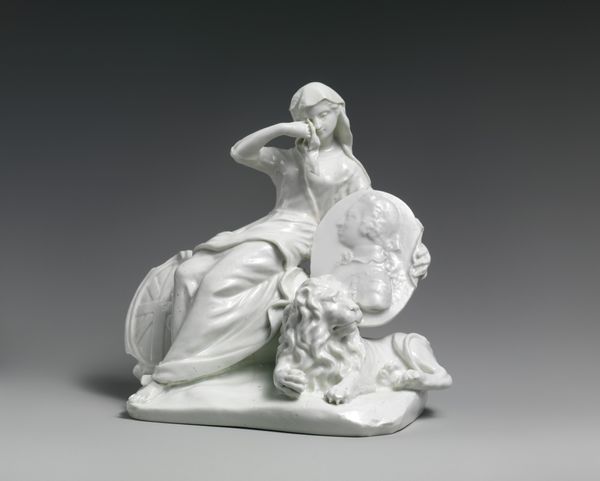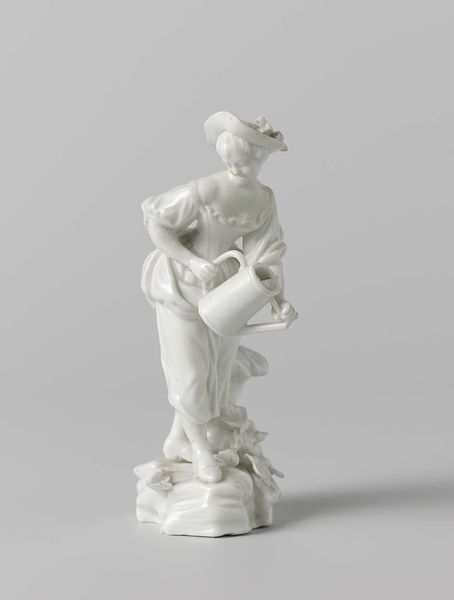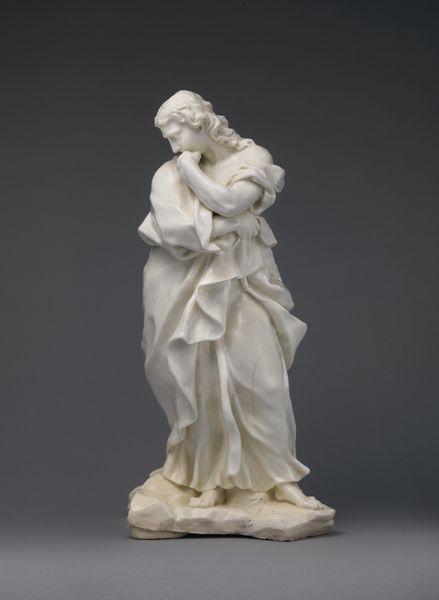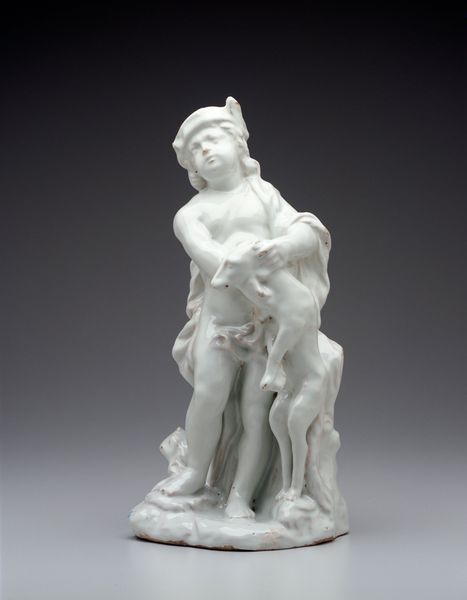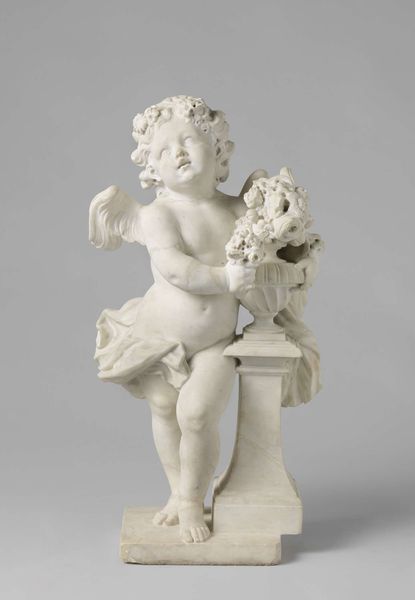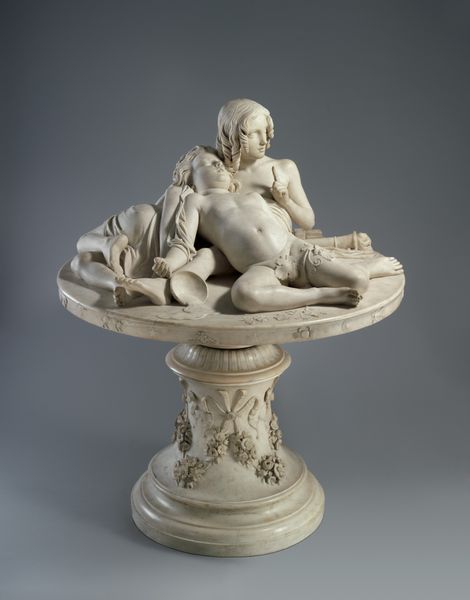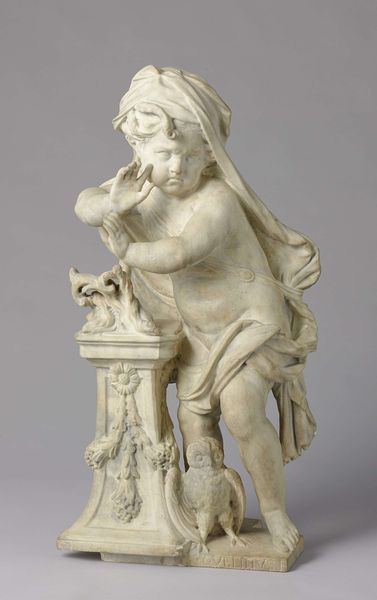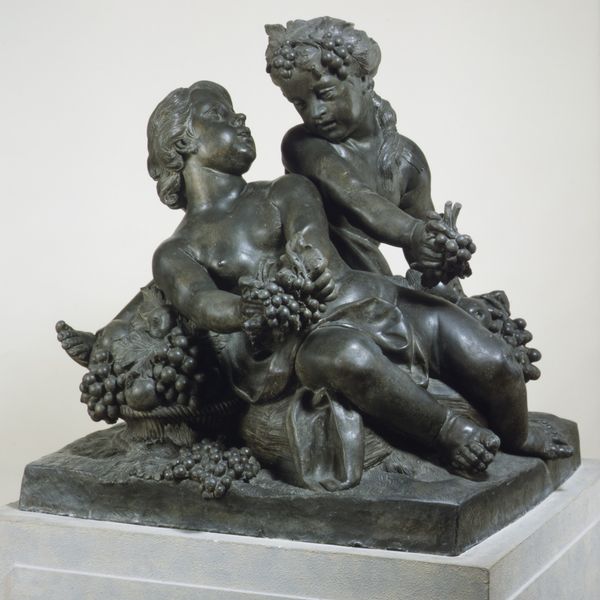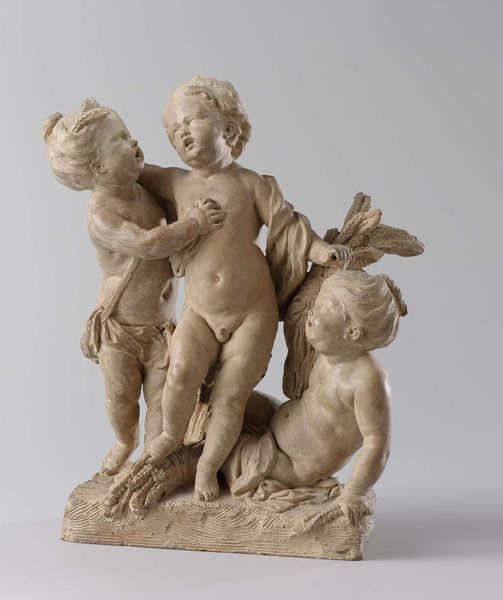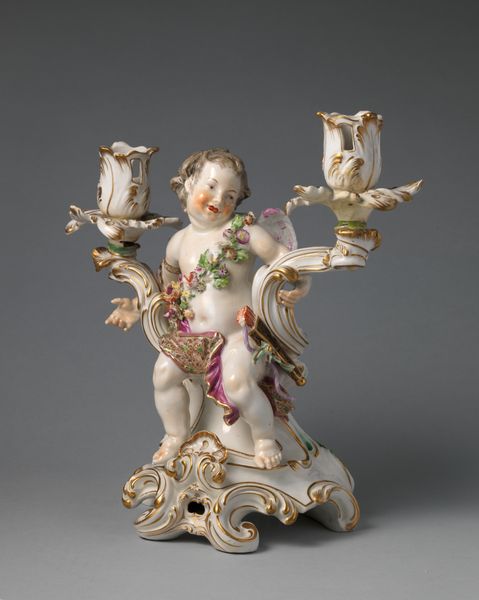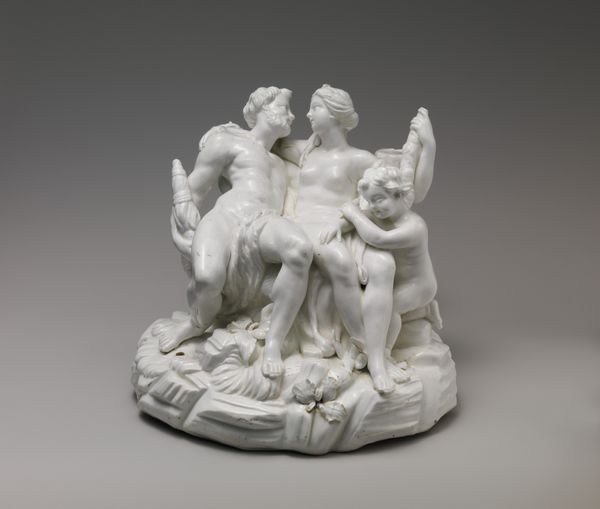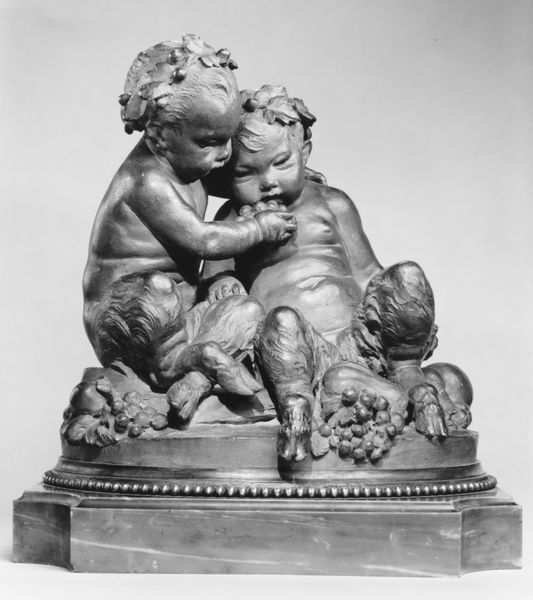
Man and woman at a card table 1745 - 1755
0:00
0:00
ceramic, porcelain, sculpture
#
sculpture
#
ceramic
#
porcelain
#
figuration
#
sculpture
#
men
#
genre-painting
#
decorative-art
#
rococo
Dimensions: Height: 5 1/2 in. (14 cm)
Copyright: Public Domain
Editor: Here we have "Man and Woman at a Card Table," a porcelain sculpture created between 1745 and 1755 by the Capodimonte Porcelain Manufactory. It's currently housed at the Metropolitan Museum of Art. The Rococo style gives it a lighthearted feel, almost frivolous. What’s your take on this piece? Curator: The Rococo style is a perfect mirror for the aristocratic decadence of the time. Look closely: we have a scene of leisure, seemingly harmless, but think about the socioeconomic context. Who could afford such leisurely pursuits? Who had the privilege to be immortalized in porcelain playing cards? This piece invites us to reflect on labor, wealth disparity, and gendered expectations of the 18th century. Editor: Gendered expectations? Can you elaborate on that? Curator: Absolutely. Note how the woman is positioned, almost passively watching the game, her daughter clutching her dress. Meanwhile, the man is active, engaged. Consider the implications of these power dynamics. Were women afforded agency during that era? What was a woman’s role in that specific society? It's crucial to view these objects not merely as pretty decorations but as artifacts encoding societal values and norms, often reinforcing inequalities. Editor: That’s a perspective I hadn't considered. I was mainly seeing it as decorative art, a product of its time without deeper meaning. Curator: Exactly, and it's so tempting to keep it as just a pretty scene, right? However, thinking through power structures gives it a strong emotional undercurrent, not just aesthetic. It makes me wonder: if porcelain figures could talk, what untold stories of disenfranchisement might they reveal about this gilded cage? Editor: That's definitely given me a lot to think about regarding art's role as a mirror—or maybe a mask—reflecting society. Thanks for sharing this take. Curator: My pleasure. Seeing through that mirror is, in my opinion, where art becomes activism.
Comments
No comments
Be the first to comment and join the conversation on the ultimate creative platform.
